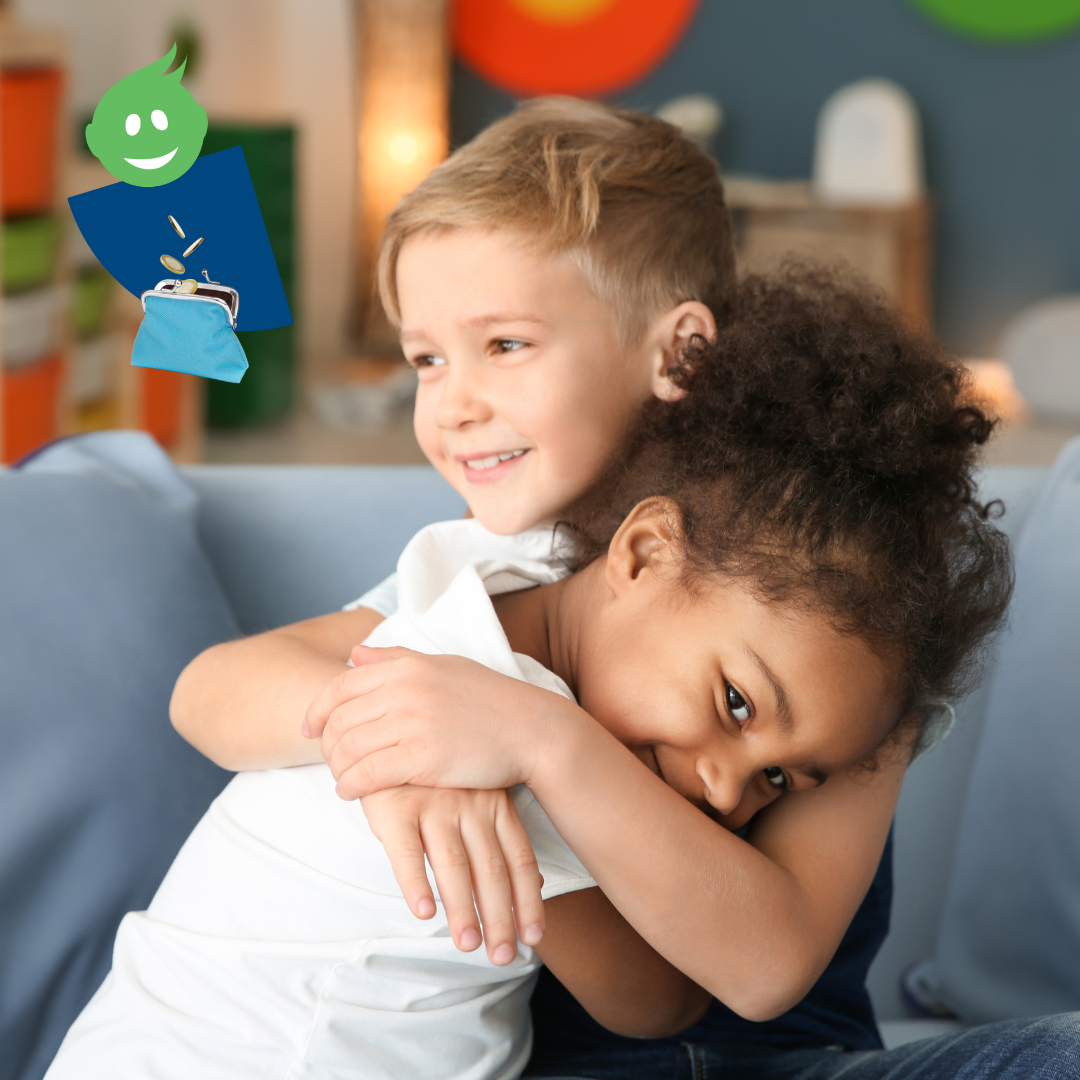A safe space for baby
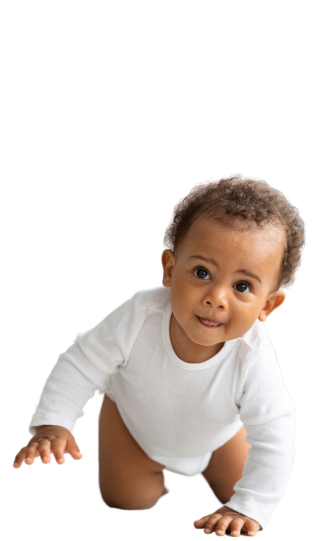
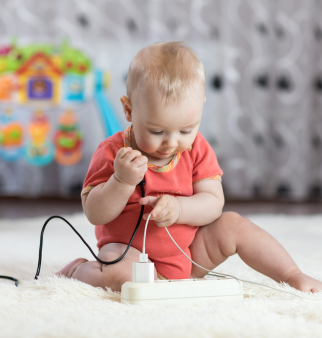
What are the risks for baby? Prevention is better than cure.
Falls, burns, choking, electrocution and intoxication are the risks lurking in your own home. Making it a safe space for baby means putting into practice the common sense you already apply in your home to prevent these risks. But how to go about it?
Put yourself in the shoes of your little one and imagine living and moving around your home with their innate curiosity. Do it room by room (and on your knees), anticipating the risks in order to avoid all sources of danger. Then limit access to the hazardous areas and objects. Discover all our tips below.
The goal is for baby to be able to move around without hurting themselves in an environment that is safe for them and gives you peace of mind.
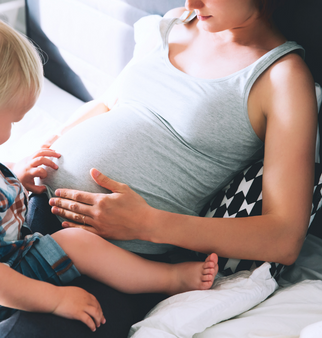
When to make your home baby-safe?
Babies begin to crawl from the age of seven months. They sometimes sneak away very quickly and try to grab every object that crosses their path. Prevention is the key to avoiding a bumps and bruises!
By making every room in the house safe in advance, you are giving your little one a chance to get on with their natural development in a safe space. Why not get things ready during your pregnancy? This will allow you to look on with complete peace of mind as your newborn strives and thrives.
When your little one grows and gains in strength, it will be necessary to adapt these safety measures regularly, in line with the stages of development.
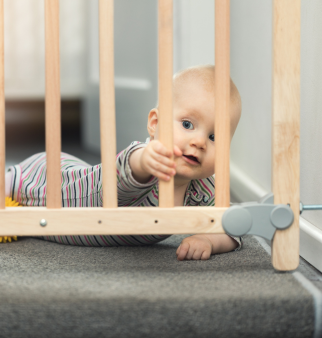
Safety throughout the home
Some safety measures apply to all rooms in the home. So here are some tips that you can apply everywhere and at all times.
- Remove any small objects that are lying around on the ground or within reach of baby. Think about what you have in the cupboards or on low shelves too! Putting everything in their mouth will be your little one’s favourite game. Choking is a real risk.
- Remove obstacles that could cause injury or make baby trip. Such as rugs, flower pots, vases or some baskets.
- Make sure that heavy furniture can’t be overturned. Fasten them to the floor or wall. Baby might want to stand by leaning on the handles of the drawers of the chest of drawers…
- Fit locks to doors or baby safety gates. These also prevent them from going walkaround in dangerous areas of the house (stairs, kitchen, garage). Avoid swing, sliding or folding doors. For doors that remain open, use door stops to prevent fingers from getting pinched.
- Prevent access to and the opening of windows. Don’t place furniture under the windows which would allow baby to climb up. Fit locks, guardrails or bars on your windows. Under no circumstances should your child be capable of getting past them.
- Make furniture with sharp corners safe to prevent baby from bumping into them and injuring themselves. Place shock-absorbing foam pads on the corners of coffee tables and TV cabinets.
- Remove, tie or fasten cords (blinds), strings and electrical cables (extension cords, computer or smartphone cables). They pose a risk of strangulation or burns for babies.
- Block access to electrical sockets. Fit special child protection covers on the sockets. You can also place a piece of furniture in front of sockets, while making sure that your baby cannot crawl under it.
- Prevent your baby from reaching heat sources such as open fires, stoves and electric heaters. Buy or make your own safety barriers.
- Seal cleaning products, chemicals, alcohol and medications to prevent poisoning.
- Store knives, needles, brittle objects, matches and DIY tools high up and out of reach.
- Remove poisonous plants and cacti.
- Keep your household waste and rubbish bins in a place that is out of bounds for baby. Don’t forget to store batteries in a box, as they are toxic!
Basic essential rules !
- Standard equipment in all homes: a first aid kit, smoke detectors and a fire extinguisher as a minimum requirement.
- In the event of a domestic accident: call one number: 112.
- For your babysitter: your phone number and a duplicate of your keys in case of emergency.

Additional safety measures room by room
In the baby’s room
The crib
- Check that the crib is in good condition, that it is properly assembled, that nothing unscrews, flakes or cracks. Make any necessary repairs.
- Check the space between the bars but also the space between the mattress and the edge of the crib. Baby should not be able to trap any limb (head, arm, hand, legs or feet). If you buy a new crib, choose one that meets all the standards.
- Do not allow objects to hang into or around the crib that could cause choking (blanket, pillow) or strangulation (baby monitor cable, mobile string).
- As your little one grows, lower the level of the mattress and remove big teddy bears that could encourage them to climb out of the crib.
The changing table
- Choose a stable, durable changing table with raised side edges to prevent baby from rolling over.
- Opt for an anti-roll changing mat that will limit baby's movements.
- Get your baby change kit ready beforehand. It should be easy to access for you but not for your baby. You can attach baskets to the edges of the changing table, for example.
- We can never repeat it enough: never stray away from the table when your baby is lying on it. Not even for a second, as falls can happen very quickly.
If you don’t have the budget or space for a changing table, then it’s better to opt for a comfortable solution for you and your newborn, on a bed or on the changing mat on the floor, making sure that baby can’t move!
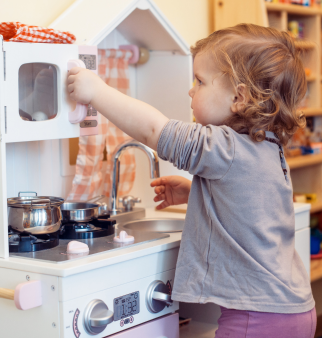
In the bathroom
- Place a non-slip mat at the bottom of the bath.
- Check the water temperature before placing your baby in it. Install thermostatic taps, if possible.
- Never leave your baby in the bathtub unattended. Empty the water from the bath as soon as bath-time is over.
- Store your small household appliances (hair dryer, straightener) and sharp objects (nail clippers, razors) high up and out of reach, all well as medicines and make-up.
- Put down the toilet lid. But, of course, you already do that!
In the kitchen
The kitchen is a source of danger for an adult, so just imagine for a baby… here too, KidsLife takes you through the ways of minimising the risks.
- Unplug appliances that you do not use daily. Prevent access to those you use regularly. Make all the cables safe as well.
- Keep sharp objects (knives, scissors, mandolin, graters, peelers) and cleaning products out of reach.
- Remember that anything at ground level or at the bottom of your kitchen cabinets might interest your little one… so don’t place anything heavy or dangerous at this height.
- If your oven is low, put protective covers on the knobs and a lock.
- On your stove, turn the handles of your pans and pots inwards so that they do not extend beyond it. This must become a natural reflex! Be firm and make your child understand that they must not approach this dangerous area of the kitchen.
- Opt for place mats rather than traditional tablecloths. Your little one could pull it towards them, bringing whatever is on the table with it.
In the laundry room, cellar, garage and garden
Ideally, do not to let baby play in these different rooms, as there are simply too many sources of danger. Therefore, prevent their access to the maximum with safety barriers.
If this isn’t possible, lock everything you can. Even the washing machine. Don’t forget to keep household products and tools out of reach of your children, even older children!
Of course, no safety measures will ever replace your supervision… being vigilant is and will always be the best advice KidsLife can give you!
First Aid Training
Now that your home is secure, how about taking a first aid training course? Just a few hours are enough to learn how to react in case of a domestic accident.
Check with your health insurance provider. They probably contribute to the costs of first aid training courses offered by the Red Cross, such as those offered by Mutualité Neutre.
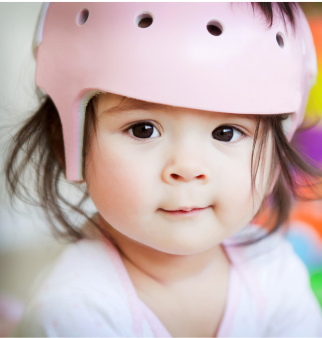
Little accidents happen
One last piece of advice, this one for your mental health. If you've read this far, you're probably a super parent, invested in your child's safety. Despite your vigilance, a little accident can still happen, and that's okay. Be kind to yourself: your child needs to discover their limits, and a confident parent to show them.
Want to receive your Growth Package/Child Benefit payments from KidsLife? Submit your application quickly and easily online! We will ensure that you never miss out on any benefits!

